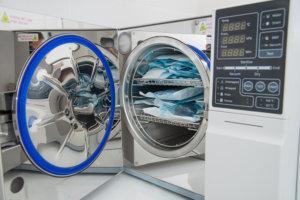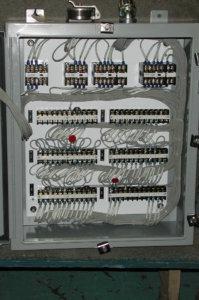Autoclaves are available in a wide range of shapes, sizes and functionalities. No matter the size or application, they all rely on autoclave temperature sensors. Let’s take a closer look at sensors for autoclaves and why they are critical to their functioning.
Autoclaves Are Used Across Several Industries
Understanding the importance of autoclave temperature sensors begins with exploring the vast number of autoclave applications.
Industrial Autoclaves
Large industrial autoclaves are utilized in different manufacturing environments to process various components and parts. Industrial autoclaves use pressure and heated steam to produce key parts, such as:
- Specialized rubbers
- Laminated glass
- Pressure-treated woods
Autoclaves Used in Scientific Research
Autoclave sensors are used in scientific research to destroy microorganisms and other potentially dangerous pathogens that may linger on research equipment and samples.
Aviation & Aerospace Applications for Autoclaves
Aerospace autoclaves are highly valuable in the production of large aircraft parts and components, such as the fuselage and wing. This indispensable piece of equipment is paramount for processing high-quality aerospace structural components.

Medical & Healthcare Autoclaves
Medical steam sterilizers are utilized in different healthcare environments for the sterilization of moisture-stable and heat-stable items, such as:
- Implanted medical devices
- Surgical Instruments.
When it comes to sterilizing medical devices within the healthcare setting, there are three phases to the process:
- Conditioning Phase
- Exposure Phase
- Exhaust Phase
Which Temperature Sensor Is Used in Autoclave Devices?
The two primary types of contact autoclave temperature sensors are:
- Thermocouples
- Resistive Temperature Detectors (RTDs)
1. Thermocouple Autoclave Temperature Sensors
Low-cost and self-powered, thermocouple temperature sensors are the most commonly used option. The thermocouple (TC) sensor is a voltage-generated device that changes its output based on the temperature changes detected. There are several types of thermocouple sensors used to adapt to short distances, long distances and medium distances:
- Types J, K, E, N and T
- Types S, R, B, and C
2. Resistance Temperature Detectors
Resistance Temperature Detectors (RTD) are passive transducers that operate by unilaterally altering the temperature. Considered a more accurate type of temperature sensor, RTDs boast a broad range of measurement capabilities. RTDs made from platinum are the most versatile, uniform and stable.
- Class A and B tolerances (EN 60751)
The Quality of the Autoclave Temperature Sensor Is Critical
Selecting temperature sensors for the autoclave industry is important. Failing to utilize a quality temperature sensor can open the door to a host of problems.
The Wrong Sensor Can Cause Damage to Goods and Samples
If you choose the wrong temperature sensor or one that is subpar quality, it can result in your product or sample melting. All autoclaves run at extremely high temperatures. When these temperatures are not closely monitored, it can cause materials to melt, especially plastics.
Failure to Sterilize the Goods
Autoclaves rely on pressure and steam to properly sterilize. If the autoclave temperature sensor malfunctions, it can lead to microbial or viral contamination.
Faulty Readings & Damaged Components
The unique environmental conditions of autoclave chambers are extreme for any type of equipment. The repeated cycling of autoclaves can lead to an ingress of moisture on the interior of the probe. When this happens, it can lead to:
- Incorrect temperature reading
- Low temperature readings
- Reduced component life
- Ultimately failure of the sensor
Temp-Pro’s Autoclave Load Sensors/RTDs Can Help
Temp-Pro’s precision-engineered temperature sensors are uniquely designed to meet the rigors of autoclaves. Our sensors are specially-designed to exceed the autoclave demand for accuracy, versatility, and durability. For example, Temp-Pro’s Autoclave Load Sensors/RTDs are entirely sealed. This unique design reduces all problems associated with steam and vacuum cycling.
Key Takeaways
- Autoclaves are instrumental pieces of equipment across a range of industries, including medical, industrial, research, aerospace and more.
- Temperature sensors are a vital component for autoclaves.
- Thermocouple and Resistance Temperature Detectors are two types of temperature sensors used in autoclaves
- Selecting a quality temperature sensor is important for the performance and functionality of the autoclave.
- An inferior temperature sensor can damage the product or sample, fail to properly sterilize the part, give faulty readings, and lead to premature failure.
- Temp-Pro’s innovative Autoclave Load Sensors/RTDs are specially engineered for the rigors of the autoclave environment.
Contact Temp-Pro Today!
Since 1972, Temp-Pro has consistently met the needs and exceeded the expectations of global operating facilities and OEM industries. We actively collaborate with our customers to meet the rigorous demands of their schedules and location.
Contact us today!


